Two years ago I decided to make a rockery either side of some steps leading up from the patio. This week I finally finished planting it up and top dressing. I know I’m amongst plant friends here at Six on Saturday so you’ll understand what an enjoyable time I had doing this. A welcome distraction to the difficulties family and friends are facing, I eked out the planting to give me something really special to look forward to each day.
And so the day is here – the big rockery reveal. I hope you enjoy a few views of my mountain scenery.
Before and after
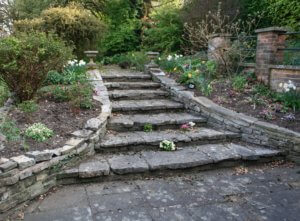
No reveal can be complete without a before picture. This picture makes the area look OK but I’d never had success creating a good planting plan here. It took me several years to work out that the slope was the problem. A new found love of alpines led me to the obvious answer – a rockery, using the the slope as a mountain scree and large stones to facilitate an informal terracing.
That revelation was two years ago and it’s taken a long time to get to ribbon cutting day. Expense was an obvious impediment, as was the difficulty of sourcing and transporting heavy stones but there was an even bigger problem. Weeds! The first book I read on rockery creation made it clear that dealing with perennial weeds is a problem anywhere but particularly in a rockery, where the roots will enjoy the rock crannies as much as any alpine.
This area was therefore cleared of any existing plants and a whole season spent weeding out ground elder and bindweed. We spent a whole summer looking at bare earth. I’m hoping a small nugget of bindweed root didn’t escape us but you never know! Regular readers of this blog will have seen the machinery required to get the stone in place but those that like pictures of big kit, click here.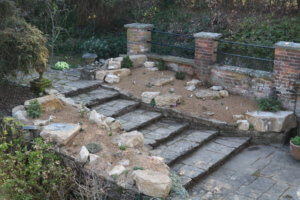
The crevice garden
A big problem I encountered throughout the project was how to integrate the rocks into the existing scenery. The area at the top right of the rockery was a tricky one – where some huge rocks looked great from the house view but had an ugly backside. My solution was to use some old paving stones laid on their sides and in a series of parallel lines to create a crevice garden. The last of these then created a retaining wall, preventing soil falling onto the top path.
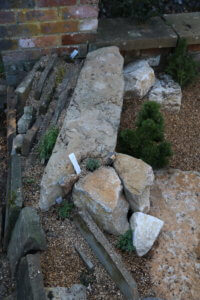
A few more plants are needed here and being tight planting spaces between the stones, planting baby plants will be the key. I’ve got some seed trays on the go from the 2020 Alpine Garden Society seed exchange so maybe some will find a home here. It’s not the sunniest part of the rockery sadly so the plants will need to take a bit of shade. I read that Erodiums don’t mind dappled shade so I’ve got a couple of them planted in here already, including one called Erodium ‘Katherine Joy’. I like plants that share my name!
View from the lawn
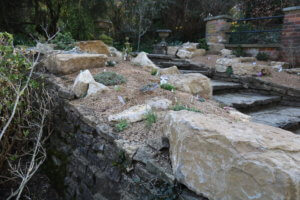
This was another area that needed careful integration – mainly aesthetically. The drop to the flower bed and lawn below is three and a half feet. This wall, set out in Edwardian times when the house was first built, came ready made with planting crannies for rock plants such as aubretia. I’ve added a few trailing plants, including some more aubretia and phlox to soften soften the top of this wall.
A few of the plants – first an instant win
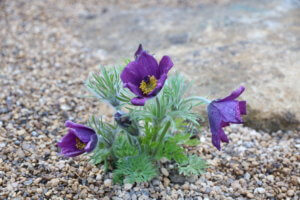 It’s probably hard to believe from the pictures above but there are over 50 plants in the rockery. Many were from the 2019 AGS Seed Exchange, others mail order recently from Pottertons and D’Arcy and Everest. These are both family run nurseries, relying on mail-order now that the summer gardening shows are cancelled. If you’re keen to make an alpine trough during lock-down they’re open for business.
It’s probably hard to believe from the pictures above but there are over 50 plants in the rockery. Many were from the 2019 AGS Seed Exchange, others mail order recently from Pottertons and D’Arcy and Everest. These are both family run nurseries, relying on mail-order now that the summer gardening shows are cancelled. If you’re keen to make an alpine trough during lock-down they’re open for business.
So many of the plants I’ve put here are just babies or toddlers and will develop over the next few years, slowly creeping over rock and gravel. I wanted some quick wins though and this Pulsatilla (Pasque Flower) was a garden centre purchase just before lockdown. It’s a very deep purple version, sadly unnamed.
Raoulia australis
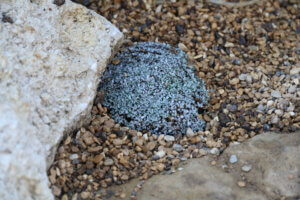
This little silvery mat is a hummock forming plant, sometimes described by alpine growers as a ‘Sheep’, presumably for its woolly shape. I’ve read this is hard to grow, which is a shame as I’m really hoping that it spreads slowly across the gravel and over the shelves of the larger stones around it.
Androsace septentrionalis ‘Stardust’
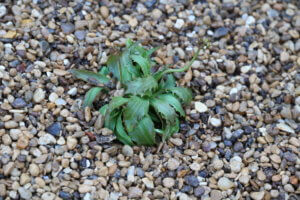
This unpromising looking thing is a secret firecracker and will explode later in the season with long sparkler-wire branches topped with tiny white star shaped flowers. Here’s a picture of one in my alpine trough last summer. Light the touchpaper!

This seasonal diary is part of a weekly link-up of garden bloggers from around the world, called Six on Saturday. For more information and links to other blogs crammed with gardening activity, check the blog of host The Propagator.
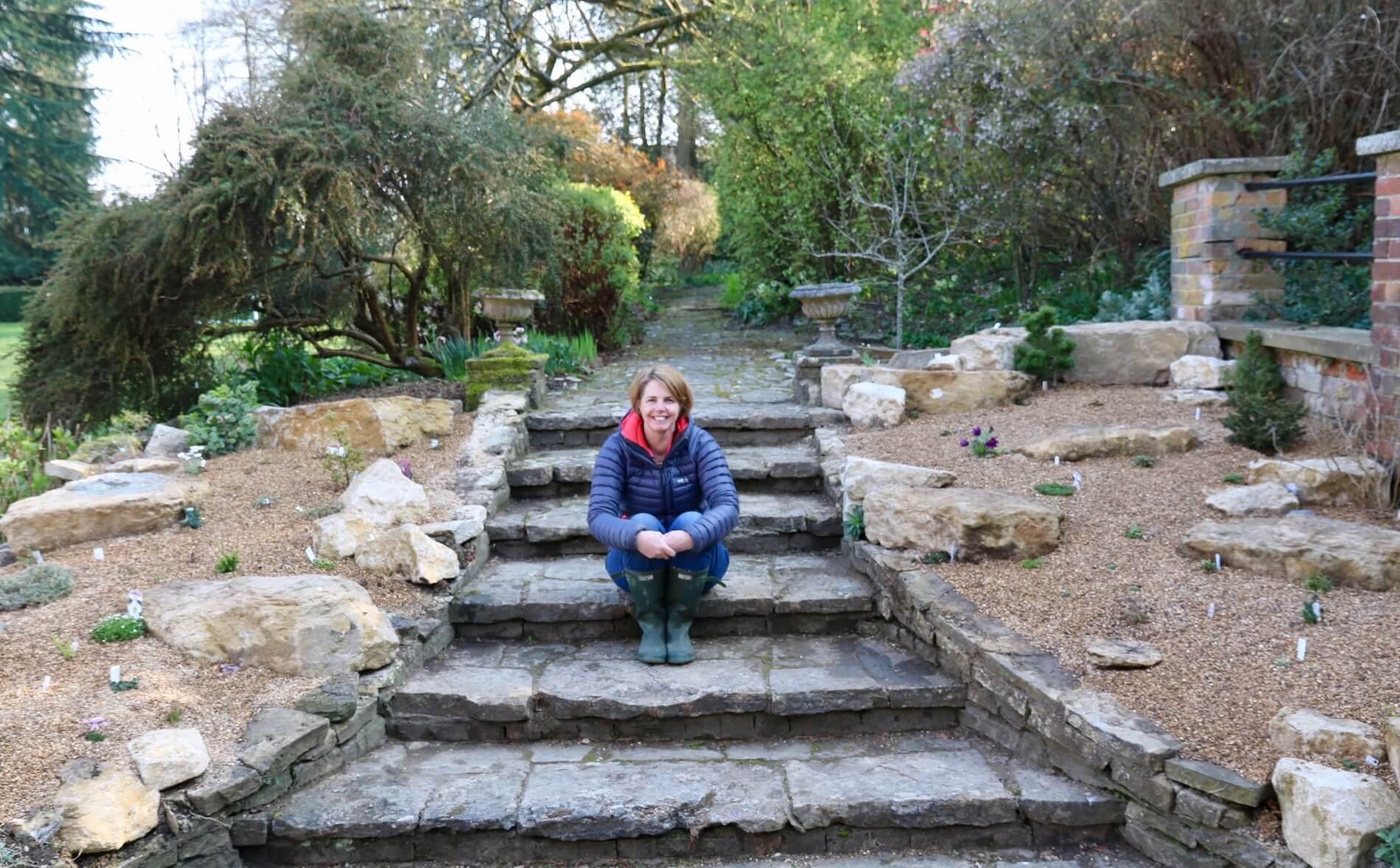
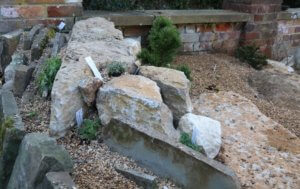

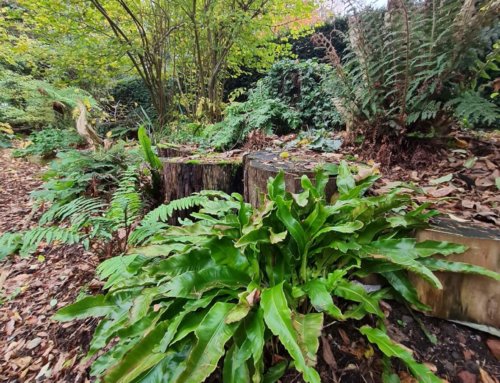
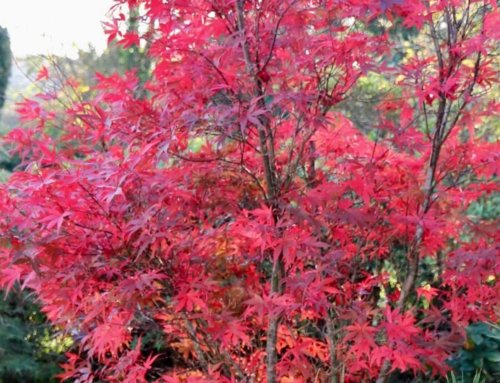
Looks fantastic, I I will be wonderful when plants get established. Good luck with the Raoulia, I managed to get it to fill a 26cm pot and flower beautifully, the lost it. I have tried again three times and it has died. The first one seemed much more robust than the others I have bought
Hi Stephen, so glad you like it. I’m over the moon. Fingers crossed for the Raoulia. If you’ve failed I’m suddenly even less optimistic!
Congratulations!! Looking forward to seeing it in happier times. X
I can’t wait to see everyone in person. How’s your garden landscaping going? Can they still work socially distanced?
Wow it looks wonderful! How joyful it must be!
I keep heading out there to take a peek and see what’s growing but then again you have to be patient with alpines!
It’s wonderful ! What a nice job you did.
More, you’ve introduced plants that I didn’t know … Congratulations
Plants you don’t know? I don’t believe it Fred,
Looks great and it’ll be nice seeing how the plants develops over time. I have several spare patio slabs after pulling up part of the patio last year. I may have to see if I can incorporate a crevice rock garden somewhere.
Go for it Graham – it was fun to build!
Crevice gardening on a grand scale, and we all look forward to its progress over the years. Its a wonderful achievement and I hope it gives you great pleasure over the coming years. At our gardening club earlier this year Paul Cumbleton who had worked on the Crevice Garden at Wisley, come to give us a talk…I spent my pocket money the following week on a mail order from Pottertons. I am yet to start on a very small crevice garden, in the meantime plants are in the gravel garden.
I’m sure they’re very happy in the gravel garden. I love hearing real experts talking about what they do and the Wisley Crevice garden is a sight to behold. I heard it takes allot of weeding!
Your patience and hard work has paid off. Enjoy.
Thanks Linda. I promise to post lots of updates…
That’s been a large undertaking and it’s good to see that you’ve been successful in what you set out to do. Quite an achievement. I’m sure you’ll enjoy it during the summer months.
Hi Catherine – there were many times I wondered whether this was a good idea but hopefully you can see from my face that I’m over the moon I did!
It looks wonderful. Must be so satisfying to have achieved such an outstanding result. I like the Raoulia and I thought given its Latin name it might grow here, but an online search proves otherwise. Good luck with yours. We Sixers will watch with interest, I’m sure.
Hi Jane, I promise to feature lots of rockery updates – just try and stop me! Hope you’re all OK over there.
So jealous of your crevice garden. I miss going to look at the one at Royal Botanical Gardens in Edinburgh but I know it will still be there when this is over. I featured my red Pasqueflower in my blog and really want a purple one. Stay safe.
Hi Paul – I did think of you when I featured this purple one. I have a red one that’s a week or so off flowering. I’m heading to your page now to take a look at yours…
Brill, quite an ambitious plan! You’ll be giving wisley a run for its money.
Blushes. I do love the Wisley rock garden and alpine area – it’s my inspiration.
All that in only 2 years, battling both elder & bindweed! A super wow from me. The before photo is hardly unsightly but what a positive change you’ve made for the after photos. Love that ‘firecracker’ btw – a better name than stardust. Really looks like it’s bursting in your bottom photo. Hope you had a celebratory drink or cake or something to make you smile. So what’s the next project? 😉
Hi Lora – thanks as ever for your supportive comments. Two years felt like a long time but I’m just so pleased I got it done to enjoy during isolation. Next is changing the planting in a border to more tropical looking plants. Remember the kniphofia/dahlia combo I shared in previous sixes? Trouble is I need to put some hedging in first and prepare the soil. The contractor I bought the hedging from has it in his yard but his company is not operating due to Covid-19 restrictions and he has had to furlough his staff. One day it’ll be done but right now it’s on pause. I shall just enjoy primping the other parts of the garden I guess.
Looking good. I have a tiny Belfast sink with alpines but I lose some every winter because of the wet, despite being planted in practically gravel – I must find some way of covering it next winter. I do like your crevice garden. I have a lot of very big rocks in my garden but not practical for planting in or around.
Yes some of the alpines really don’t like the winter wet. At Wisley I’ve seen some alpine troughs with little rooves built over them for the winter but that must be quite an effort to do each year and they also look a bit odd!
It looks fantastic Katherine. I hope it gives you many years of enjoyment. I would love to read more about it and the plants you’ve chosen. Perhaps you’ll do another Six on it.
I’ll definitely feature more of the plants in future sixes. I’m also aiming to do a more detailed write-up for the Alpine Garden Society website and will trail this in future sixes. Happy gardening Hortus!
Sorry I spelt your name wrong Katharine. Considering mine also has the two a’s I ought to have noticed!
No worries. I’m pretty used to it and it really doesn’t bother me!